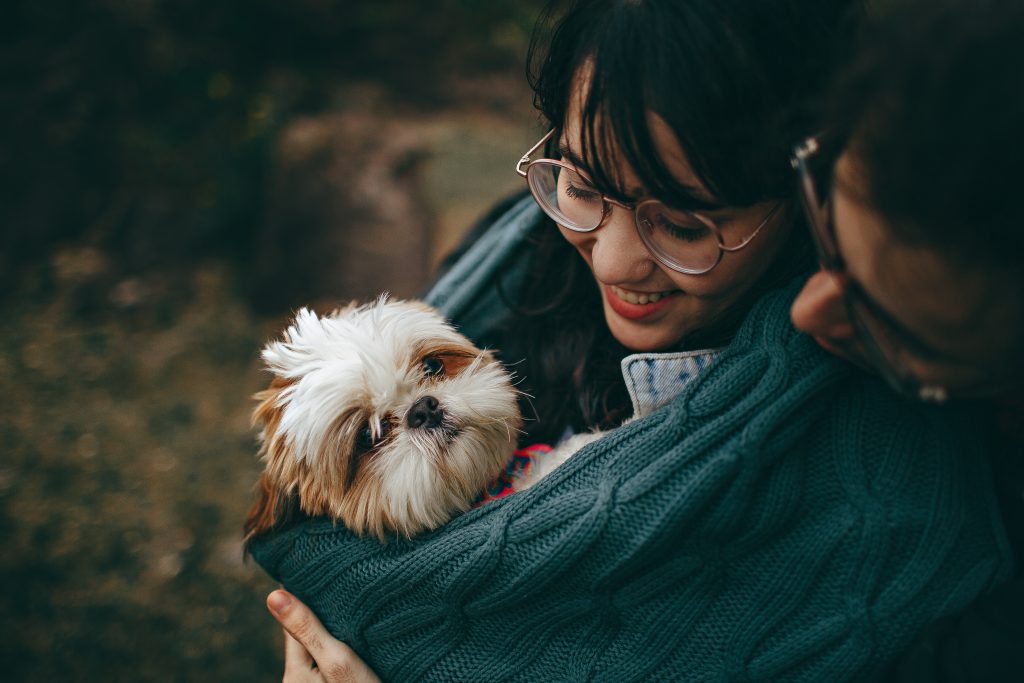7 Tips for Helping Your Dog Settle After Moving Houses

Moving homes can be stressful for everyone involved – including your dog.
Dogs thrive on consistency, familiarity and routine. These are all affected by a move, which can make it difficult for a dog to adjust to a new environment.
While you can’t avoid temporarily disrupting your pet’s life when moving house, there are many ways to make the process less stressful. Here are seven of the most important.
1. Keep The Same Dog Bed, Crate and Toys
Dogs have an incredible sense of smell. They also gain a lot of comfort from familiar scents, such as from their unwashed bedding or toys.
For this reason, avoid the temptation to replace your dog’s old stuff when moving house. New dog beds just won’t have the same comforting smell – even if they look warm and comfortable. Instead, give your pet a few weeks to settle in before upgrading to a new high-quality bed, such as the ones on this list.
Also, have beds, crates and toys packed separately and in an easily accessible box. It’s important to give them to your dog as soon as you get to the house.
2. Maintain a Consistent Schedule (Whenever Possible!)
Your dog is probably fed, walked, and let into the garden at similar times of the day. A disruption to this routine can be stressful – especially if he misses walks or other opportunities to exercise.
Try to stick to your dog’s routine during and after a move. This, combined with having his old bedding and toys, can greatly reduce stress. If your new home is close to your previous house, you could even walk in familiar locations.
3. Check The New Home is “Dog Proof”
There are many things to think about when moving, so it’s easy to overlook potential dangers to your dog. Gaps in fencing, poisonous plants and sharp objects could all be dangerous.
To keep your dog safe, check the house before you let him roam free. If you don’t have time to check the fencing or other potential dangers, keep your pet confined to a safe room with his bed, toys, and water.
Also, make sure you buy an updated ID tag before you move house. Dogs are much more likely to escape during the confusion of a move.
4. Don’t Leave Your Dog for Long Periods Soon After Moving
Dogs who don’t have separation anxiety may still struggle when left alone in a new house. To help prevent your dog developing new anxieties, build up the time he is left alone slowly, starting with just a few minutes. This gives him time to adjust to his new surroundings.
You can also leave treats and chews when you leave. Ideally, these should be hard chews or a food-stuffed Kong, as these distract a dog for longer.
If possible, arrange time off work for the first few days after a move. Your dog will find it much easier to settle when you’re at home.
Of course, leaving your dog might be unavoidable at times. If you’re going out for a long period, consider getting someone the dog knows to visit.
5. Remain Calm
Dogs have a strong ability to read human emotions. It’s part of what makes them such wonderful pets – but also means that your stress can quickly become theirs too.
Try to keep calm during a move and the weeks after. While he might not show it, your dog knows when your anxious, and this can affect how he feels.
6. Give Your Dog Time to Adjust
All dogs need time to adjust to a new home, even if you try to minimize the stress of moving. Be patient with your pet and don’t expect too much, too soon.
You should also be aware that big changes in a dog’s life can lead to temporary behavior changes. A stressed dog in a new home may bark more, for example, as there are unfamiliar sounds.
While you should never scold a dog for bad behavior – positive training is a more effective method – it’s vital not to get frustrated during a move. Your dog will pick up on your irritation and feel unsettled.
7. Give Your Dog Plenty of Attention and Love
It’s easy to get caught up in the stress of moving and forget to spend time with your dog. This is understandable, as there are many other concerns for you to think about, but can make moving more difficult for your pet.
You may not be able to spend as much time with him as usual – at least for a short period. Try to dedicate time to playing and giving him attention in “normal” ways though, as this makes the move a lot less challenging for a dog.
Summary
Dogs are sensitive to changes in their environment and routine. It’s important to help them settle when moving to a new house, as this can be a stressful period.
The key is to maintain some level of consistency. Bringing your dog’s existing bedding, maintaining his walking routine, and providing plenty of love can all help your pet to feel at home. Most importantly, be patient and calm with your pet, as dogs are sensitive to changes in their owner’s mood.
Make Your Dog Comfortable in Her New Home Click To Tweet




